St. John the Baptist Greek Orthodox Church
Introduction
Text-to-speech Audio
Images
St. John's, as seen from the intersection of Jackson Street and Park Avenue.
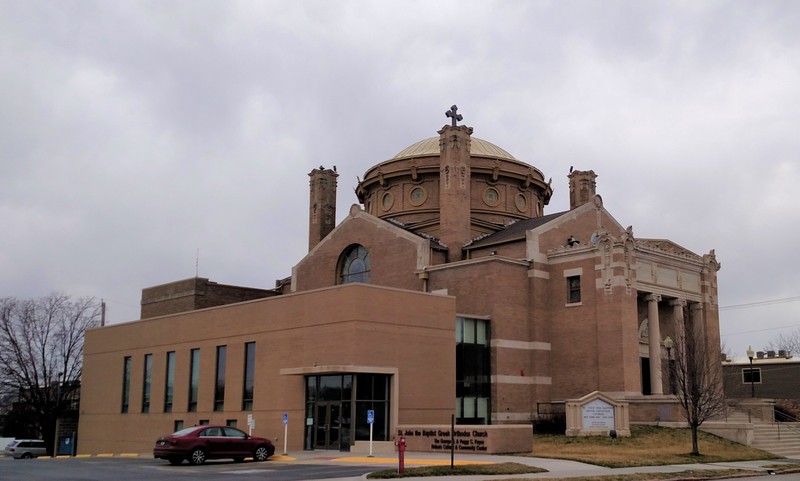
St. John's, as seen from Jackson Street.
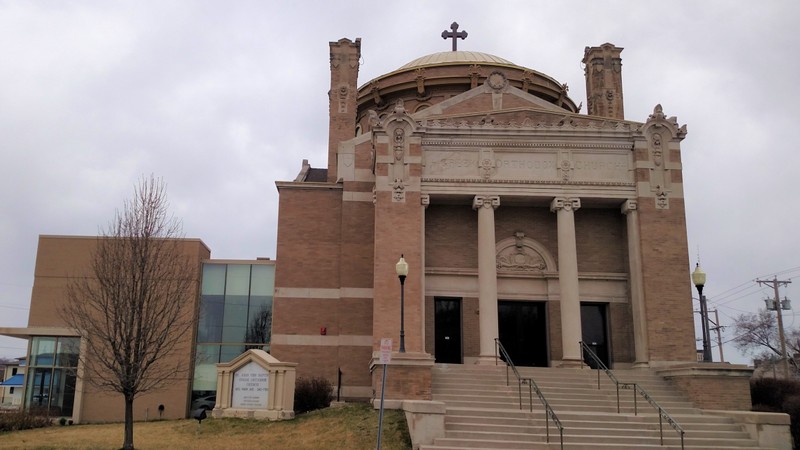
The altar, replete with depictions of the saints, including the twelve disciples and the Virgin Mary.
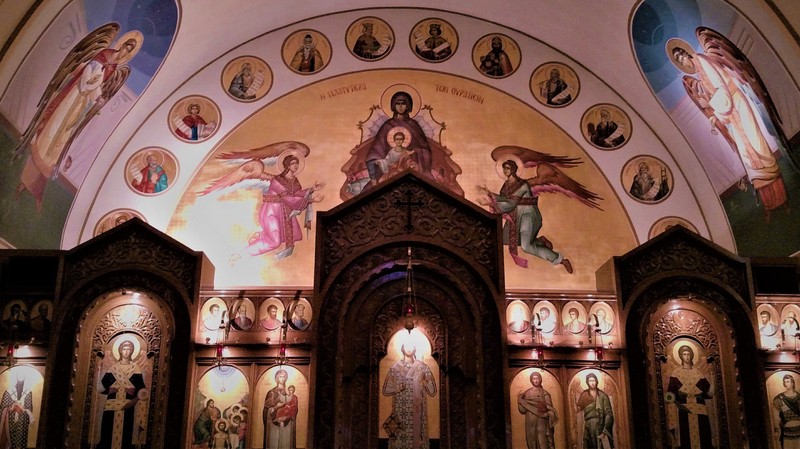
An interior view of the dome, depicting Christ, along with the archangels Gabriel, Michael, Raphael, and Uriel.
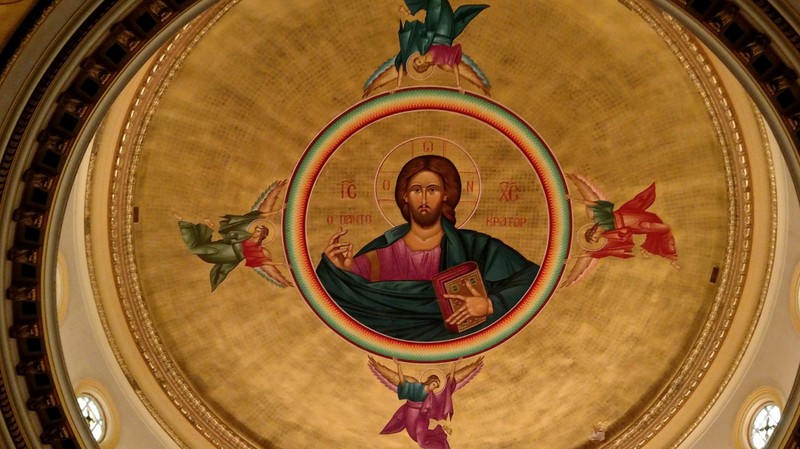
Christ’s ascent out of hades, better known as the Harrowing of Hell. The individuals on either side depict the prophets and righteous kings of Israel.
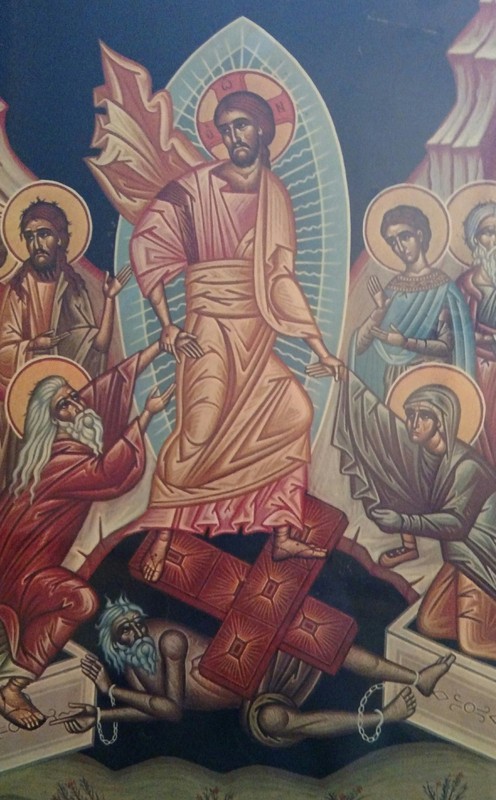
The eponymous St. John the Baptist, here shown holding a crosier (an Orthodox symbol of authority) in his left hand whilst he cradles the church in his right.
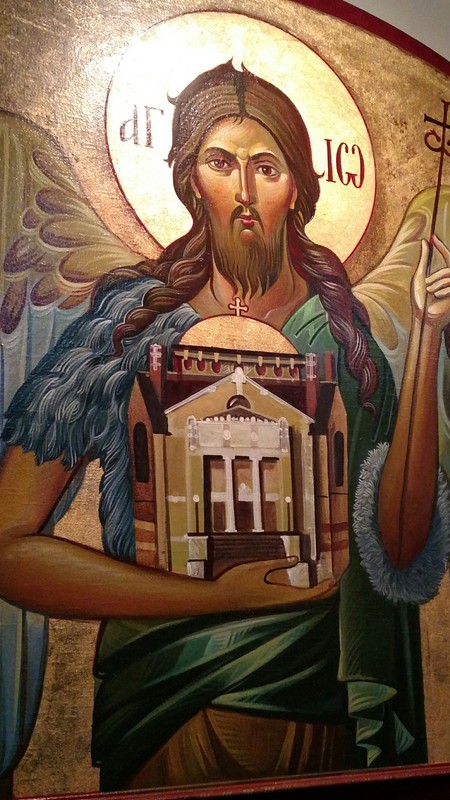
Backstory and Context
Text-to-speech Audio
The first seeds for the creation of the church were sown when, on September 29, 1905, Rabbi Cohn of Temple Israel urged his congregation to push for the construction of a new house of worship with the start of the Jewish New Year,¹ in order that they might better accommodate their burgeoning community. The rabbi’s words did not fall on deaf ears, and by January of 1906, the congregation of Temple Israel elected to move from their current residence (a humble structure located just off 24th Street), to a new, grander synagogue of their own construction.² More than half of the estimated $50,000 had been raised before a site was settled upon, and by March of 1906 the final purchase had been made, an ample plot of land on the southwest corner of 29th and Jackson Streets. John Latenser Sr., already well-known for his work across the Omaha area,³ was commissioned as architect for the project, and along with several temple-leaders, visited newly-erected temples in Minneapolis and St. Paul for inspiration.⁴ Plans for the finalized design had been drawn up by September,⁵ and by December, the trustees had awarded the building contract, with construction beginning in early 1907⁶ and completed by the end of that same year.⁷ On February 21, 1908, the congregation of Temple Israel held a final farewell meeting for their old temple,⁸ and by May 23, the newly-constructed building was officially dedicated in a ceremony which saw exceptional turnout, despite inclement weather.⁹
As Temple Israel was busy with construction, the small Eastern Orthodox branch in South Omaha was pursuing a building of their own for the 800 practicing Greeks there. At the dawn of the twentieth century, a small yet sizable population of Greek workers had made residence in South Omaha, many of whom found work as rail workers or at the city’s numerous meat-packing plants. This recent influx of workers, much like the Japanese and Italian immigrants before them, provoked the ire of the established population; the Omaha Daily News even went so far as to say, “[The] Greeks are a menace to the American laboring man . . .” This anti-Greek sentiment would continue to be a blight on the city, even as the Hellenic community struggled to establish itself in Omaha.¹⁰
The first wedding ever performed in Omaha under the Greek Orthodox rite had only taken place in November of 1907,¹¹ but the Greek church had already begun to experience marked growth around the country at this time.¹² The Orthodox practitioners had begun construction of their own church, not unlike the congregation of Temple Israel, to accommodate this growth.¹³ However, the prosperity seen in the Jewish community at this time was not to be for the South Omaha Greeks, as the Greek Town Riot of 1909 drove much of the Hellenic population out of the city entirely.¹⁴
It was in this period of turmoil that the parish of St. John the Baptist was founded. Greek immigrants living in the Midwest, despite their small numbers, were determined to preserve their faith, culture, and traditions in the face of societal pressures,¹⁵ all of which motivated the founding of St. John’s, the first Greek Orthodox Church in Omaha, in 1908. A small church-house was constructed for the congregation at 16th and Martha Streets, but the parish of St. John’s was not officially consecrated into the Greek Orthodox Church until 1928.¹⁶ Factionalism between royalist and republican sects of the Greek Orthodoxy (itself a result of political upheaval following the National Schism in Greece),¹⁷ as well as a jurisdictional dispute between the Church of Greece and the Patriarchate of Constantinople over control of the American Diaspora, led to the delay.¹⁸
Meanwhile, with the ever-increasing growth of the Jewish community came the need for Temple Israel to relocate once again, and in 1951, the congregation made plans to do just that.¹⁹ The 325 parishioners of St. John’s seized on the opportunity, and that same year, purchased the Temple Israel synagogue for $80,000.²⁰ Two years later, the St. John’s parish had its building,²¹ and from then onward, the Greek Orthodox Church has had the privilege to call it home. In the wake of massive remodeling and renovations, the former Temple Israel building was consecrated by Bishop Ezekiel of the Chicago Diocese in 1958, coinciding both with the fiftieth anniversary of the parish of St. John’s, and the building’s original consecration in 1908.²²
Sources
Omaha World-Herald, September 30, 1905, 3.
Omaha World-Herald, January 18, 1906, 5.
William K. Fowler, School Buildings and Grounds in Nebraska, Department of Public Instruction State of Nebraska, April 1, 1902, 164.
Omaha World-Herald, March 14, 1906, 3.
Omaha World-Herald, September 16, 1906, 1.
Omaha World-Herald, December 2, 1906, 6.
Omaha World-Herald, January 1, 1908, 14.
Omaha World-Herald, January 22, 1908, 1.
Omaha World-Herald, May 23, 1908, 3.
“Racial Tensions in Nebraska in the 1920s,” NebraskaStudies.org, accessed April 21, 2018, http://www.nebraskastudies.org/0700/frameset_reset.html?http://www.nebraskastudies.org/0700/stories/0701_0130.html
Omaha World-Herald, November 4, 1907, 3.
Omaha World-Herald, March 3, 1907, 3.
Omaha World-Herald, August 14, 1908, 11.
John G. Bitzes, “The Anti-Greek Riot of 1909 - South Omaha,” Nebraska History, 51.2 (June 1970), 199–224.
Theodore Saloutos, “Cultural Resistance and Change: Greeks in the Great Plains and Rocky Mountain West, 1890-1970,” Pacific Historical Review 49, no. 1 (February 1980): 77–103.
“History,” Saint John the Baptist Greek Orthodox Church - Omaha Nebraska, accessed April 14, 2018, http://www.stjohnsgreekorthodox.org/parish/history.html
“Greek Immigrant Chronicals (Excerpts),” The Lowell Hellenic Heritage Association, accessed June 6, 2015, https://web.archive.org/web/20150606222134/http://ecommunity.uml.edu/hellenicheritage/features/Karas_chronicals.htm
Excerpts from Thomas E. Fitzgerald, “The Orthodox Church in America,” accessed April 21, 2018, http://www.holytrinitymission.org/books/english/orthodox_church_america_fitzgerald.htm#_Toc48999621
Omaha World-Herald, January 12, 1951, 8.
Omaha World-Herald, December 30, 1951, 6.
Omaha World-Herald, August 3, 1953, 12.
Omaha World-Herald, March 15, 1958, 5.
